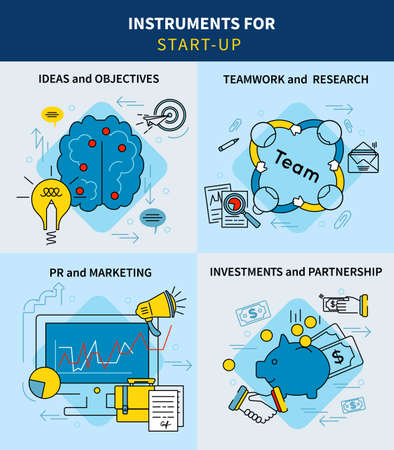1. Understanding Scenario Planning for Startups
Scenario planning is a strategic tool that helps startups prepare for various possible futures. Instead of making decisions based solely on a single prediction, founders can build plans around multiple potential outcomes—ranging from the best-case scenario to the worst-case situation. This approach is especially important in the unpredictable world of startups, where things rarely go exactly as planned.
What Is Scenario Planning?
At its core, scenario planning involves identifying key factors that could impact your startup and imagining how different combinations of those factors might play out. It’s not about guessing the future but about being prepared for anything. By thinking through a range of possibilities, you can make more confident choices about budgeting, hiring, product development, and fundraising.
Why Scenario Planning Matters for Startups
Startups operate in environments with high uncertainty and limited resources. A well-built scenario plan helps founders:
- Budget wisely: Allocate funds for essentials while keeping backup plans if revenue falls short or exceeds expectations.
- Reduce surprises: Anticipate roadblocks like market shifts, funding delays, or unexpected growth opportunities.
- Make faster decisions: With scenarios mapped out ahead of time, you can act quickly instead of scrambling under pressure.
Cultural Attitudes Toward Risk in the U.S.
The American startup ecosystem has a unique relationship with risk. In the U.S., taking risks is often seen as a positive trait—“fail fast, learn faster” is a common mantra. Investors may expect entrepreneurs to take bold swings, but they also value founders who are prepared for both success and setbacks. This cultural attitude makes scenario planning especially relevant; it allows startups to embrace risk while also managing it responsibly.
How Scenario Planning Reflects U.S. Startup Culture
| Aspect | U.S. Cultural Attitude | Impact on Scenario Planning |
|---|---|---|
| Risk-taking | Encouraged and celebrated | Plans include aggressive growth paths alongside conservative ones |
| Failure | Seen as a learning opportunity | Worst-case scenarios are openly discussed and planned for |
| Adaptability | Highly valued | Pivots and rapid changes are built into scenarios |
| Transparency with Investors | Expected and respected | Diverse scenarios shared during fundraising discussions |
This balanced approach helps U.S. startups stay resilient in the face of uncertainty—ready to capture upside while protecting against downside risks.
2. Identifying Potential Scenarios: Best Case, Worst Case, and Most Likely
When you’re running a startup, planning for different outcomes isn’t just smart—it’s essential. Scenario planning helps you get ready for whatever the future brings, whether that’s taking off like a rocket or facing some unexpected turbulence. Let’s break down how to identify and map out your possible financial scenarios: the best case, worst case, and most likely case.
Mapping Out Your Scenarios
Start by asking yourself: What could go right? What could go wrong? And what’s the most realistic path based on what you know today? Here are three key scenarios every startup should consider:
| Scenario | Description | Key Drivers |
|---|---|---|
| Best Case | Your product goes viral, sales skyrocket, and investors are lining up. Growth happens faster than planned. | Market demand, successful marketing campaigns, strong team performance, favorable press coverage |
| Most Likely Case | You hit your expected targets. Growth is steady but not explosive. You meet milestones as planned. | Average customer acquisition, consistent operations, meeting industry benchmarks |
| Worst Case | You face setbacks—maybe delays in development, lower sales, or higher costs than expected. | Poor market fit, unexpected expenses, competition, economic downturns |
How to Identify Key Financial Drivers in Each Scenario
The secret sauce to good scenario planning is pinpointing what really moves the needle in your business. These “key drivers” can make or break your budget:
- Revenue streams: How many paying customers do you expect? At what price point?
- Cost structure: Which costs are fixed (like salaries) and which are variable (like marketing spend)?
- Customer acquisition costs: How much does it cost to gain each new customer?
- Runway: How long can your startup operate before needing more funding?
- Cash flow timing: When will money actually come in versus when bills are due?
Example: Mapping Financial Outcomes for a SaaS Startup
| Best Case | Most Likely Case | Worst Case | |
|---|---|---|---|
| Total Monthly Revenue (by Month 12) | $120,000 | $60,000 | $20,000 |
| Total Monthly Costs (by Month 12) | $50,000 | $40,000 | $35,000 |
| Cumulative Cash Flow (by Month 12) | $500,000+ | $100,000+ | – $50,000 (need more funding) |
| Main Risk Factors | Scaling too fast; hiring challenges | No major risks if plan holds steady | Losing key customers; high churn rate; tech issues |
Why This Matters for Your Budgeting Strategy
If you know what might happen—and why—you can build a budget that’s flexible enough to weather storms but ready to capitalize on big wins. Laying out these scenarios helps you spot red flags early and gives investors confidence that you’ve done your homework.
In the next section, we’ll dive deeper into building financial models for each scenario so you can turn these forecasts into real numbers—and actionable plans.

3. Crafting Flexible Budgets that Withstand Uncertainty
In the fast-paced world of American startups, uncertainty is the only constant. To thrive, your budget needs to be as adaptable as your business model. Let’s dive into how you can design a flexible budget that helps you respond quickly—whether you’re facing unexpected success or tough challenges.
Why Flexibility Matters in Startup Budgets
Traditional budgeting often fails in startup environments because things change fast. Flexible budgets let you adjust your spending and investments in real time. This means you can seize opportunities or cut losses without getting stuck in rigid plans.
Core Strategies for Building Adaptable Budgets
- Scenario-Based Forecasting: Prepare multiple budget versions based on different scenarios—best case, worst case, and most likely case.
- Rolling Forecasts: Update your budget every month or quarter instead of once a year to reflect new information and market changes.
- Variable vs. Fixed Costs: Clearly separate your fixed costs (like rent) from variable costs (like marketing), so you know where you can scale up or down quickly.
- Cushion for the Unknown: Always set aside a contingency fund for unplanned expenses or opportunities.
Sample Flexible Budget Table
| Budget Item | Fixed Cost | Variable Cost | Contingency Fund | Pivot Actions |
|---|---|---|---|---|
| Salaries | ||||
| Marketing | ||||
| Office Rent | ||||
| Product Development | ||||
| Total Per Month |
Pivots Made Simple: Respond Fast and Smart
If your sales double overnight, a flexible budget lets you pour more money into marketing and production without scrambling. If things slow down, you can quickly cut non-essential spending and protect your runway. This approach—common among successful American startups—keeps your business agile and ready for whatever comes next.
4. Communicating Scenario Planning with Stakeholders
Why Communication Matters in Scenario Planning
Scenario planning is only effective if your stakeholders are on the same page. In the American startup ecosystem, transparency and clear communication help build trust and align everyone’s expectations—whether you’re talking to investors, team members, or advisors.
Presenting Scenario Plans to Different Stakeholders
| Stakeholder | What They Care About | How to Present Scenarios |
|---|---|---|
| Investors | ROI, risk management, financial milestones | Use visual aids like graphs and charts. Highlight best and worst case outcomes and explain how you’ll pivot if things change. Show that you’re prepared for both growth and setbacks. |
| Team Members | Job security, company direction, daily impact | Break down scenarios in simple terms. Focus on how different outcomes could affect workloads, roles, or hiring plans. Encourage questions and open dialogue. |
| Advisors | Strategic alignment, potential risks, resource allocation | Share detailed scenario data and ask for feedback. Discuss assumptions behind each scenario and explore alternative strategies together. |
Tips for Effective Communication in an American Business Context
- Be Honest: Share both optimistic and challenging projections. Don’t sugarcoat the tough parts; honesty builds credibility.
- Use Plain English: Avoid jargon where possible so everyone can understand your plans.
- Visualize Data: Americans appreciate clear visuals—charts, infographics, or slide decks make complex information more digestible.
- Encourage Feedback: Invite questions and suggestions. This shows respect for others’ perspectives and creates buy-in.
- Set Regular Check-Ins: Keep scenario planning as an ongoing conversation, not a one-time event.
The Power of Alignment Through Scenario Planning
When you take the time to communicate your scenario plans clearly, you show that you’re thinking ahead and considering everyone’s interests. This approach not only earns trust but also helps your startup move forward as a united team—even when the future is uncertain.
5. Practical Tools and Resources for Effective Scenario Planning
When it comes to scenario planning for your startup’s budget, having the right tools can make a huge difference. U.S. founders typically rely on a combination of budgeting templates, forecasting software, and professional networks to cover all their bases—whether they’re preparing for a big win or a tough setback. Here’s how you can get started with resources that are easy to use and trusted by other American startups.
Budgeting Templates
Using ready-made templates can save you time and help standardize your process. You can find plenty of free and paid options online, many of which are specifically designed for startups. Here’s a quick comparison:
| Template Name | Where to Find It | Key Features |
|---|---|---|
| Score Startup Budget Template | score.org | User-friendly; includes both monthly and annual projections; tailored for early-stage startups |
| Capterra Free Startup Budget Template | capterra.com | Customizable categories; great for SaaS or product-based startups; Excel compatible |
| Google Sheets Business Budget Template | sheets.google.com (template gallery) | Cloud-based collaboration; easy sharing with your team and investors |
Forecasting Software Used by U.S. Startups
If your business is growing, software can help automate complex calculations and run different scenarios with just a few clicks. These tools are popular among American founders:
| Software | Main Benefits | Typical Users |
|---|---|---|
| LivePlan | Drag-and-drop financial modeling; “what-if” analysis; integrates with QuickBooks/Xero | Startups, small businesses, accelerators |
| Pry Financials (now part of Brex) | SaaS metrics tracking; scenario planning dashboards; real-time updates for fundraising decks | Tech startups, venture-backed companies |
| Fathom | Visual reporting; KPI monitoring; multi-scenario forecasts in minutes | Finance teams, consultants, agencies working with startups |
| Cubewise/Power BI (for advanced users) | Customizable analytics; integrates various data sources; powerful scenario simulation tools | Larger startups, those with in-house finance analysts or data teams |
Professional Networks & Communities for Scenario Planning Support
Beyond software and templates, tapping into local startup networks is one of the best ways to get practical advice. Here are some top choices in the U.S.:
- SCORE Mentors: Offers free mentoring and workshops about budgeting and financial planning. Great for first-time founders.
- SaaStr Community: Online forums where SaaS founders share budget models and discuss scenario planning strategies.
- Startup Grind: Regular meetups in major cities where you can network with experienced founders and finance experts.
- Your Local Chamber of Commerce: Many chambers offer financial management seminars specific to local industries.
Tips for Getting the Most Out of These Resources:
- Edit templates so they match your revenue model—don’t be afraid to customize.
- If using forecasting software, take advantage of free trials before you commit.
- Join at least one online community so you can ask questions as new challenges come up.
The Bottom Line on Tools for Scenario Planning:
No matter your stage or industry, starting with the right templates, leveraging software, and connecting with other founders will give you a much clearer picture when budgeting for both best- and worst-case scenarios in your startup journey.


